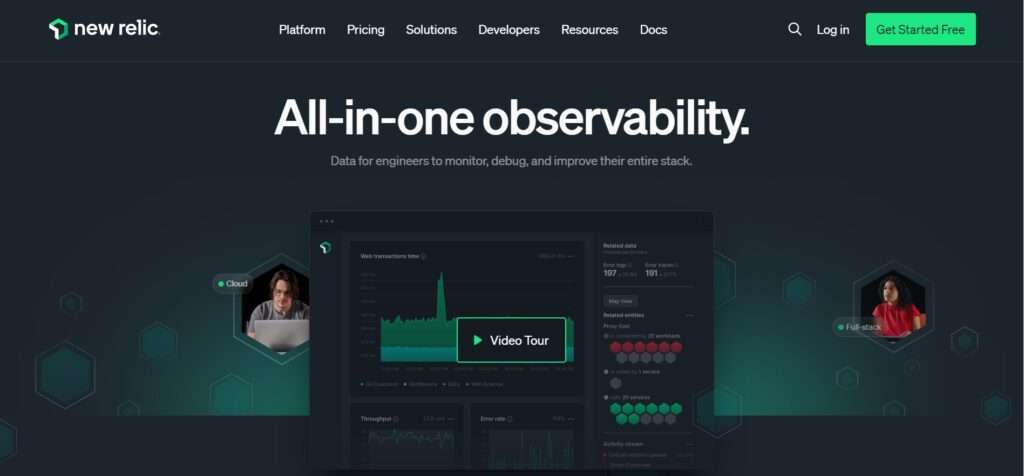In today's fast-paced digital market, businesses depend a lot on real-time info to keep their online apps and services running well. New Relic, a well-known tool for tracking performance, is very important for helping organizations reach this goal. This post will give you in-depth tips and tricks for better synthetics tracking in New Relic. This will help you make sure that your web apps work well and give users a great experience.
Understanding Why Synthetic Monitoring Is Important
Before we talk about how to optimize, let's talk about why synthetics tracking is so important for online apps.
· Availability tracking
With synthetics tracking, you can check the availability of your web services in real time. It acts like a user and lets you know right away if there is any downtime.
· Performance Benchmarking
You can check how well your apps and services work in different scenarios by using synthetics tracking. This helps find problems and ways to make things better.
· Better user experience
By keeping an eye on your application's most important user trips, you can find and fix speed problems before they happen. This improves the user experience and reduces the number of people who leave your site right away.

How to Set Up Synthetics Monitoring in a New Relic
Let's set up tracking for synthetics in New Relic.
Step 1: Make a monitor for synthetics.
- Sign in to your account on New Relic.
- Go to the 'Synthetics' tab on the New Relic One homepage.
- Select "Make a monitor."
- Pick the type of computer that fits your wants the best. There are also Ping, Simple Browser, and Scripted Browser as other options.
- Set the monitor's settings, like the URL to watch, where to watch it, and how often to check it.
- Save a copy of your screen.
Step 2: Set up policies for alerts
It is important to set up warning rules so that you know right away if there are any problems with speed.
- On the New Relic One homepage, go to 'Alerts & AI' and click on 'Alert Policies.'
- Make a new warning strategy for tracking synthetics.
- Set the conditions for an alert, such as the response time criterion and the mistake rate.
- Set up notice routes so you can get tips through email, Slack, or SMS, among other ways.
- Save a copy of your alert policy somewhere safe.
Step 3: Look back and make changes
After you've made your synthetics tools and notice processes, it's time to look at the data and improve your web apps.
- Check the synthetics tracking data in New Relic every so often.
- Pay attention to speed trends, problems, and bottlenecks.
- Work with your development and management teams to fix any problems as soon as you can.
- Keep making changes to your tracking approach to meet the changing needs of your application.

Best Practices for Synthetics Monitoring Optimization
Here are some best practices for optimizing synthetics tracking that will help you stay ahead of the competition in the digital world
1. Increase the number of places that are being watched.
Monitor your web apps from many different places to find out how they work in different areas. This lets you give all of your users the same experience everywhere.
2. Pick a frequency that makes sense.
Change how often tracking happens based on how important your program is. Applications that get a lot of use may need to be checked more often, while less important services may need to be checked less often to save resources.
3. Use computer trackers that are set.
Scripted browser monitors give users the ability to do things by simulating complicated user actions. Use them to track user trips with more than one step, like logging in or filling out a form.
4. Make the process of fixing things easier.
Integrate the warnings you get from watching synthetics with automation tools so that corrective steps can be taken instantly. This cuts down on downtime and makes the application more reliable.
5. Stay up-to-date on what you know.
Stay up to date on what's new in web application tracking and what New Relic can do. You should keep your tracking approach up-to-date so you can take advantage of new features.
Lastly, New Relic's synthetics tracking is a good way to make sure that your online apps work well. You may stay competitive, deliver outstanding user experiences, and outrank your rivals in the digital world by following the principles provided in this article and employing best practices. Keep in mind that in the Internet world of today, where things are always changing, regular tracking and improvement are necessary to stay ahead.
Start improving your synthetics tracking in New Relic right away, and you'll see your web apps reach new levels of speed and stability. With synthetics tracking from New Relic, you can find and fix speed problems before they affect your users. By keeping an eye on your web applications all the time, you can make sure they work well and give users the best experience possible. Also, New Relic's advanced analytics and reporting features let you learn important things about your application's performance and make choices about how to improve it based on data. Start using the power of New Relic right away and see how it improves the speed of your web apps.




